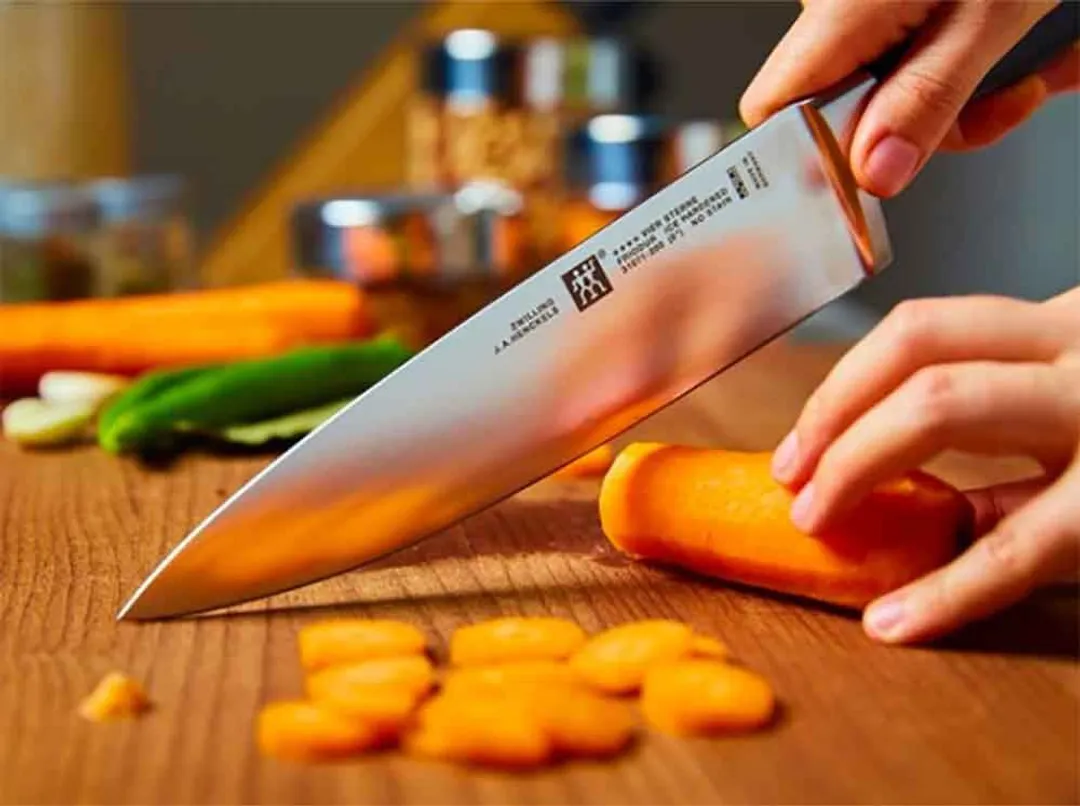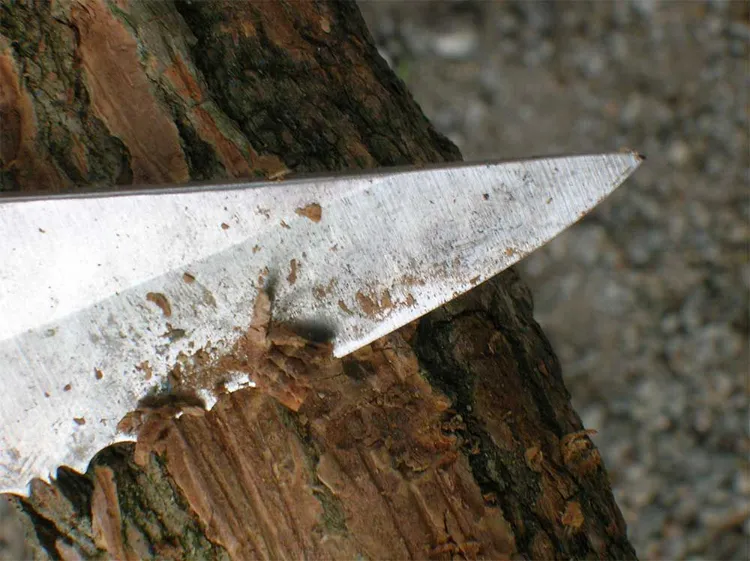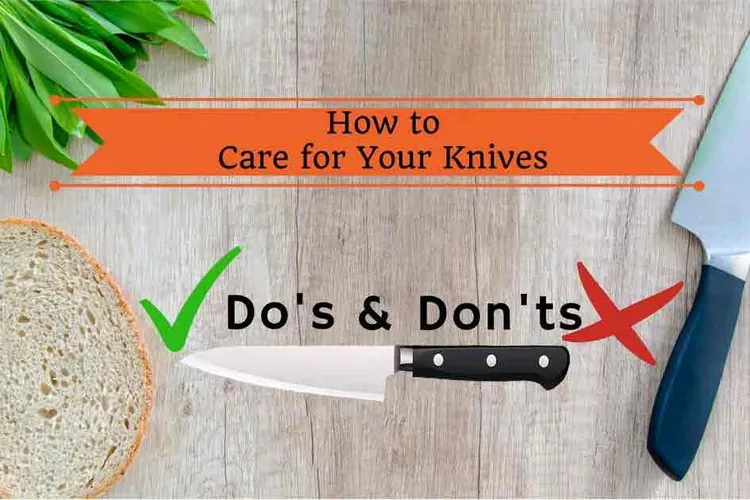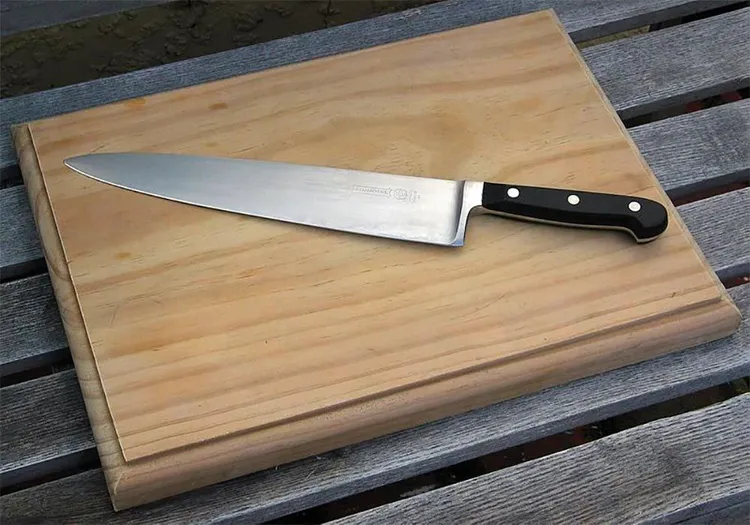Our recommendations are made independently through Research & Testing. We may receive commissions from purchases made via our links.
Things You Need to Know Before Buying a Kitchen Knife
A quality kitchen knife can serve for decades to make cooking faster and more enjoyable. Learn how to pick the right one.
I read somewhere that a kitchen knife to a cook is like a partner to a dancer. As someone who spends the same considerable amount of time on cooking and dancing myself, I couldn’t agree more.

It usually takes a lot of patience, and sometimes even bandaids to find the right partner and the right knives.
Sometimes it’s a series of trial and error. Sometimes you stay with a mediocre one simply because you don’t recognize the incompatibility. You’d spend all your life thinking the little annoyances you encountered are normal, until you find the perfect one. Then you will realize what you’ve missed all this while.
Good kitchen knives, much like good dance partners, bring balance, stability, and enhance your technicality. They follow your lead with utmost precision, making every cut effortlessly natural, giving you the confidence and the inspiration to get creative during prepping.
The good news is, the search for the right kitchen knives doesn’t always have to be a tedious journey. You can save a lot of time and headache in the search by 1) determining your own expectations, and 2) knowing the basics of kitchen knives.
Understanding Kitchen Knives
Everything you need to know about your companion on the cutting board.
Types of Kitchen Knives
Have you ever wondered why there are so many knives in a standard kitchen knife set?
Technically, you can use the same knife for all the different types of cuts. With some skill, you can chop a pumpkin and later slice your steak with the same knife without making it a disaster.
Except why put up with average if you can have your cut sharp and precise with minimal effort? You can have your food sliced or chopped the way it should be, for the ultimate taste, aroma, quality, and aesthetics.
It only takes a very subtle change at the point, the tip, the edge, or the handle of a knife to make a huge difference.
That is why there are so many kinds of knives. Learn how to tell them apart, and the purpose of different types of kitchen knives.
Parts of a Kitchen Knife
You might be surprised, but a knife is more complicated than just a blade and a handle. Every knife has a belly, a spine, a butt, and even a heel of its own, among a dozen other parts.
But why is it important to know all the parts? No, it’s not like knowing where the butt is will make your food any more delicious. However, understanding the position and the function of each part will definitely help in picking just the knife you’re looking for.
Learn about parts of a knife if you’re not sure whether or not a bolster is a must, or if you need a full tang on your every knife.
Should You Go for Forged vs Stamped Knives?
Not all knives are created equal.
A knife can be forged from a single piece of metal, or it could be stamped out of a large “sheet”. The differences in production methods result in differences in the characteristics of the knives, and understandably, your cutting experience.
How do you distinguish between a forged knife and a stamped one? And which kind is better for you as a cook? Is the superiority of forged knives a myth or a fact?
Read to see forged vs stamped knives.
Is It Better to Buy a Kitchen Knife Set or Individual Knives?
When talking to professional chefs about buying kitchen knives, you will feel an almost absolute preference for going a la carte.
Most professional chefs would advise buying your knives separately. The reason? It allows you to choose the best knives that feel right to your hands, answer your exact requirements, suit your specific cooking style and the kind of cuisine you most often make. This ensures you will never end up with a knife that stays collecting dust in the drawer.
That said, block sets have their own perks.
A block set usually has not only the essential knives, but also a couple of others which you may not use often but are nice to have when you try a new recipe or material. Complete block sets also tend to include steak knives, a sharpening rod and a block – basically everything blade-related you’d need in the kitchen. Better yet, you can buy the sets at generally much lower prices than if you buy the knives separately.
Plus, the association of block sets with short, awkward, and generally useless knives is outdated. Knives in block sets are now of superior quality, especially those from upscale brands like Henckels or Wusthof. Even block sets from Chicago Cutlery or Victorinox – the more casual brands, can be more than decent in quality without compromises on the economical advantages.
Buying knives in a set makes choosing the sharpening tools a bliss as well. Since all the knives will likely have the same material, edge grind, angle, and style, it’s easier to find a single blade sharpener that works for most if not all of them, which is often not the case if you go a la carte.
The bottom line? If you’re a beginner, or if you a casual cook who works on a vast array of different cuisines, a full set of five to seven types of knives may be your best bet. If you cook more often (more than a couple of hours a week), going with separate knives will better ensure a smoother and more consistent cutting experience.
Picking the Best Kitchen Knife Brands
Not every knife with some name printed on its blade is a quality knife. That is why it is important to narrow your options to a few particular brands when looking for the best kitchen knives.
While some may be better than others at producing a particular type of knife, most popular brands offer a wide variety of kitchen blades to answer every cook’s basic cutting needs. Each brand has a price range that reflects not only its knives’ quality and reputation but also the customers it targets.
If you plan to spend more than a couple of hours per week in the kitchen, you will want to make sure the knives are from a brand you can always count on. You’ll have to invest quite some time getting to know the characteristics of the different brands and even their product lines. Do they offer Western or Japanese knives? Stamped or forged? Will the designs work in harmony with other items in your kitchenware collection? Are the knives comfortable to hold for a long time?
Knowing the brands and what they have to offer will help big time.
The Best Kitchen Knives to Buy, According to Cooks
Knowing what we know about kitchen knives, picking the right ones has become a lot easier. However, if the options are still too vast for you, and you hate spending time digging through forums after forums on the net, and day after day testing out the knives by yourself, we’re here to help.
We have consolidated a list of the best kitchen knives from the most well-trusted brands on the market. These knives have all been approved by hundreds, if not thousands of professional chefs and home cooks alike. To help you decide which kitchen knife best suits your needs, we also offer a detailed review for each single item.
Be it chef knives, block sets, steak knife sets, cheese knife sets, or other utility knives you’re looking for, you will find them in our listing.
Our criteria? Efficiency, safety, comfort of use, durability, and of course, value for money.
How to Care for Your Knives
While knives are usually made of very durable materials, they can be extremely sensitive, especially at the tip and the edge. You need to learn to use, clean, and store them in specific ways to maintain their cleanliness and sharpness.
But keeping them safe is not enough. Even the best knives need regular honing and routine sharpening to keep their sharpness and offer the best cuts.
All that actually is a lot simpler than it sounds. Apart from getting the appropriate sharpening tools, you simply have to keep in mind the dos and don’ts in caring for your knives in order to keep them smooth, sharp, and to maximize their lifespan.
Also learn how to hone and sharpen your knives properly. Good news: you don’t have to be a muscular blacksmith to master the techniques.
Treat your blades well, and they will stay loyal to you for a lifetime!
Authors
Luna Regina is an accomplished writer and author who dedicates her career to empowering home cooks and making cooking effortless for everyone. She is the founder of HealthyKitchen101.com and HealthyRecipes101.com, where she works with her team to develop easy, nutritious recipes and help aspiring cooks choose the right kitchen appliances.






